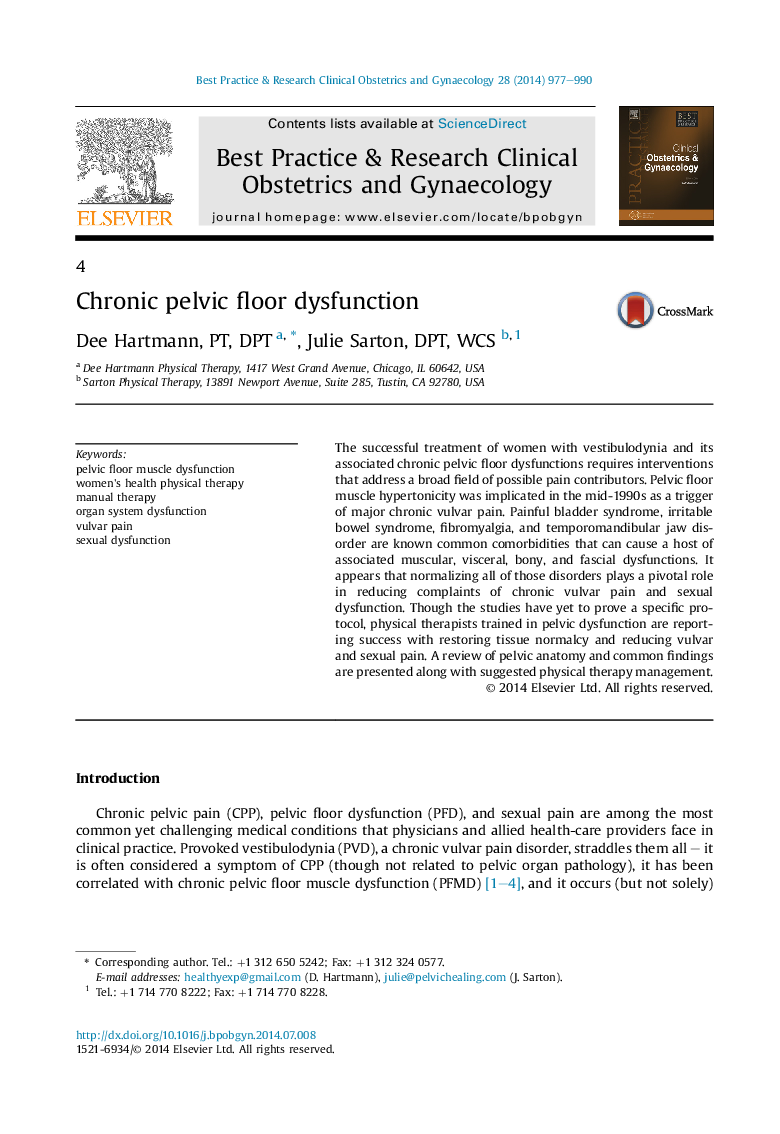| Article ID | Journal | Published Year | Pages | File Type |
|---|---|---|---|---|
| 6169101 | Best Practice & Research Clinical Obstetrics & Gynaecology | 2014 | 14 Pages |
Abstract
The successful treatment of women with vestibulodynia and its associated chronic pelvic floor dysfunctions requires interventions that address a broad field of possible pain contributors. Pelvic floor muscle hypertonicity was implicated in the mid-1990s as a trigger of major chronic vulvar pain. Painful bladder syndrome, irritable bowel syndrome, fibromyalgia, and temporomandibular jaw disorder are known common comorbidities that can cause a host of associated muscular, visceral, bony, and fascial dysfunctions. It appears that normalizing all of those disorders plays a pivotal role in reducing complaints of chronic vulvar pain and sexual dysfunction. Though the studies have yet to prove a specific protocol, physical therapists trained in pelvic dysfunction are reporting success with restoring tissue normalcy and reducing vulvar and sexual pain. A review of pelvic anatomy and common findings are presented along with suggested physical therapy management.
Related Topics
Health Sciences
Medicine and Dentistry
Obstetrics, Gynecology and Women's Health
Authors
Dee PT, DPT, Julie DPT, WCS,
